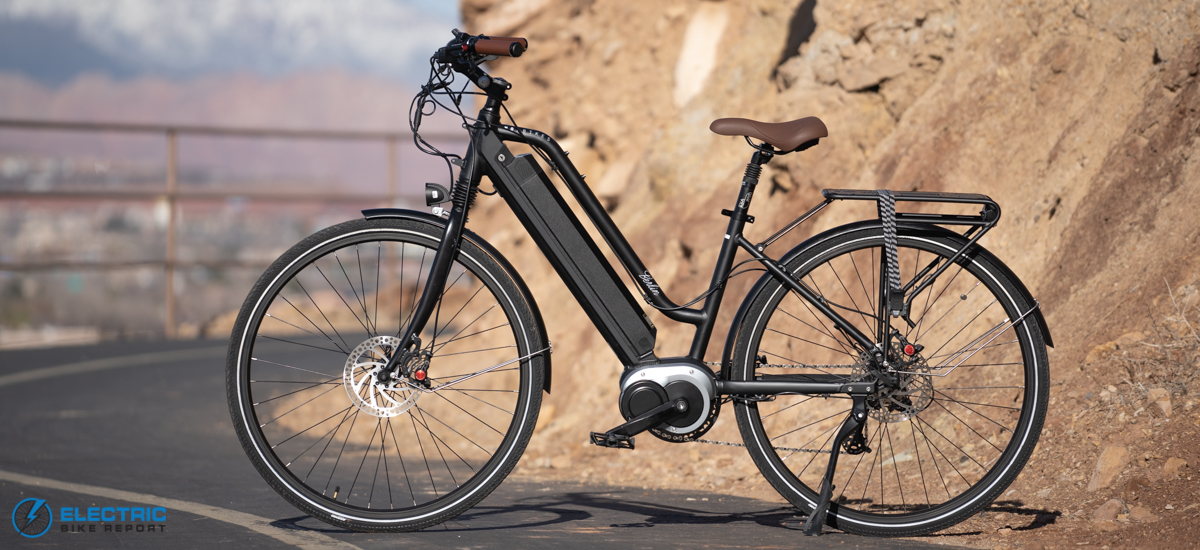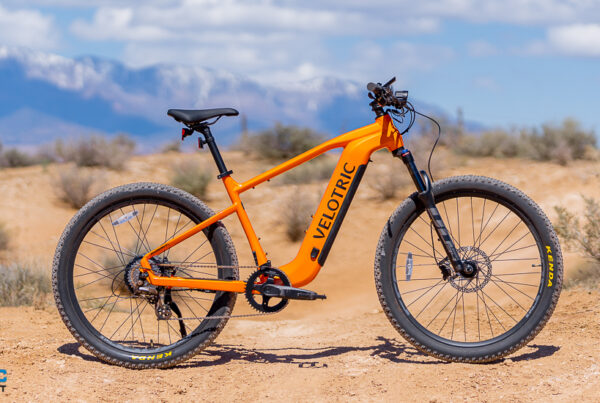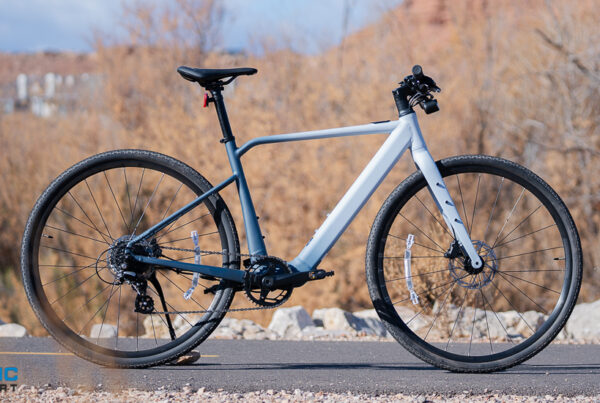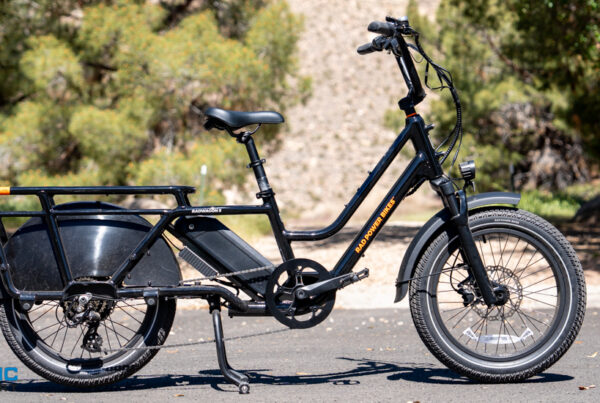Powering the MOD Berlin is a stout 350W Shengyi mid-drive motor that makes 90Nm of torque and a 48V, 12.8Ah (614Wh) battery that’s semi-integrated into the frame.
One of the highlights of this e-bike is the Shengyi motor, which I’ll dive into in more detail in the next section, but to put it short it’s responsive, grunty and comfortably quick. It’s also surprising to see considering the Berlin’s $2,890 MSRP — mid-drive motors (especially larger ones) are more commonly found on much more expensive e-bikes, but this one is priced notably low.
While MOD clearly invested in the Berlin’s powerplant, we do see some cost saving measures taken at the drivetrain. Our review bikes were spec’d with the SunRace M4 7-speed groupset, which works decently well but is less crisp than some of its competitors, such as Shimano Tourney or Altus. I’d normally spend less time critiquing a bike of this pricepoint’s drivetrain, but the Berlin is a special case. Not only is it lacking a throttle, it’s motor operates based off a torque sensor that measures how hard you’re pedaling and applies power accordingly.
Shifting is important to riding the Berlin; it’s something you do quite often, especially when compared to many of its hub-driven competitors that use less sensitive cadence sensors.
The point is the Berlin’s motor is one of its major strengths and it would probably benefit from a better drivetrain. That said, the SunRace groupset does do the job and likely does save the end-consumer a few Benjamins.
Braking is handled by a set of Zoom hydraulic disk brakes that do the job well. This is another component I’ll dive into in more detail below, but we’ve been increasingly impressed with this brand.
MOD bills the Berlin as a “dual suspension” e-bike, and while there are front and rear suspension mechanisms the bike doesn’t really fit that definition in the traditional sense. At the front of the bike there is a EXA Form S4 40mm suspension fork with the shock absorbing system built around the steerer, which harkins back to the old Cannondale Headshok suspension fork popular in the 1990’s. We still see variations of this design today, particularly on bikes like this one that aren’t designed for heavy off-road use but still need some sort of laterally stiff suspension system to take the edge off rough roads.
At the rear of the bike, we find an EXA Form 525 suspension seatpost also with 40 mm of travel. There’s no linkage or flex-based rear suspension system we’d typically expect to find on an e-bike billed as dual suspension, but the suspension seatpost and fork combo do suit this road-going e-bike very nicely. Suspension systems, especially more traditional full suspension systems, can be a little much on commuter bikes such as the Berlin built specifically for pavement commuting. They tend to be heavy, expensive and run the risk of adding unwanted flex into the frame if not designed very carefully.
FInally we come to the frame, it’s a retro themed bike that straddles the line between Euro city bike and 1950’s brutalist architecture. It’s a minimalist design that meshes rounded and square tubing into something that looks unique and functional. The Berlin is sold in both a high-step and mid-step design and MOD was nice enough to send us one of each.
The bikes are largely identical aside from different standover heights and handlebar shapes (the high-step has a MTB-style riser bar and the mid-step has swept city bars), but I found myself really digging the look and feel of the mid-step bike.
Source link








